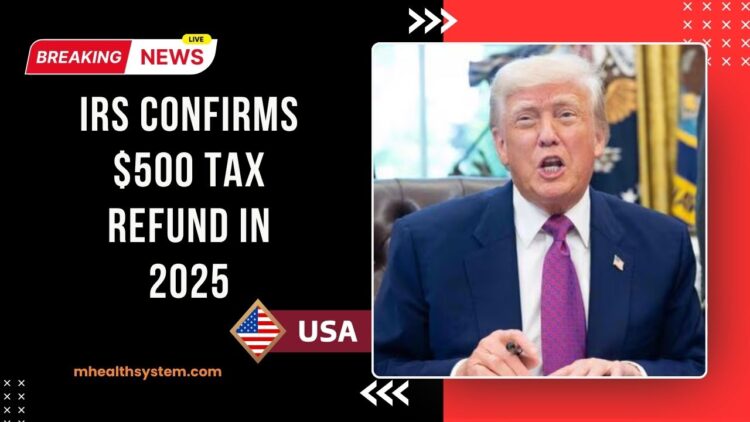With the cost of living on the rise, the IRS has announced a $500 tax refund in 2025, offering a much-needed financial cushion for low-income households, part-time earners, seniors, and eligible families with children.
This tax refund is tied to refundable credits like the Earned Income Tax Credit (EITC) and Child Tax Credit (CTC), and it’s expected to help millions of Americans.
This $500 refund is not a stimulus check—it’s based on your 2024 tax return, so filing accurately and on time is key to receiving the benefit.
What Is the $500 IRS Tax Refund?
The $500 tax refund is a one-time payment issued by the IRS in 2025 as part of its ongoing effort to return excess refundable credits to eligible taxpayers. It applies when your tax credits exceed your tax liability, especially under programs like EITC and CTC.
Refunds are only processed after you file your 2024 tax return in 2025. If you qualify, you’ll either get direct deposit or a paper check.
Eligibility Requirements
To qualify for the $500 refund, you must meet the following conditions:
- Be a low-income worker with or without dependents
- Be a parent or guardian eligible for the Child Tax Credit
- Be a senior or retiree with earned income in 2024
- Be part of a married couple filing jointly (at least one spouse must have income)
- Be eligible for EITC or CTC
Even individuals who usually don’t file taxes—such as low-income seniors—may be eligible. But you must file your tax return to receive the payment.
When Will the IRS Issue the $500 Refund?
The timing of the refund depends on how you file your tax return:
| Filing Method | Estimated Refund Time |
|---|---|
| E-filing | 2–4 weeks after submission |
| Paper filing | 4–6 weeks after submission |
| Payment Method | Direct deposit or check |
| Filing Deadline | April 15, 2025 |
Direct deposit is the fastest option. Paper returns may face delays due to manual processing.
How to Claim the $500 Refund
You don’t need a separate application for the refund. Follow these steps:
- File your 2024 tax return in 2025
- Report all earned income, dependents, and tax credits
- Choose direct deposit for faster payments
- Use the IRS “Where’s My Refund?” tool to track your payment
If you don’t normally file taxes due to low income, this year is different—you must file to receive the refund.
Why You Shouldn’t Skip Filing
The IRS has emphasized that many low-income individuals, especially retirees on Social Security, miss out on refunds each year because they fail to file. Even if you earned a small amount in 2024, filing your return can ensure access to the $500 refund and other credits.
The $500 IRS tax refund in 2025 is a welcome support initiative, especially for those feeling the pressure of inflation. This refund isn’t automatic—you must file your 2024 taxes to receive it.
If you’re a low-income worker, parent, or senior with part-time income, take action early in 2025 to claim your refund.
Remember, a few hundred dollars can go a long way when you’re budgeting carefully. Don’t miss your chance to claim what’s rightfully yours.
FAQs
Do I need to apply separately for the $500 IRS tax refund?
No, just file your 2024 tax return in 2025. The refund will be calculated automatically.
Can Social Security recipients qualify for this refund?
Yes, especially if they had part-time income or file jointly with a working spouse.
How can I track my refund status?
Use the IRS “Where’s My Refund?” tool online to track your payment after filing.


